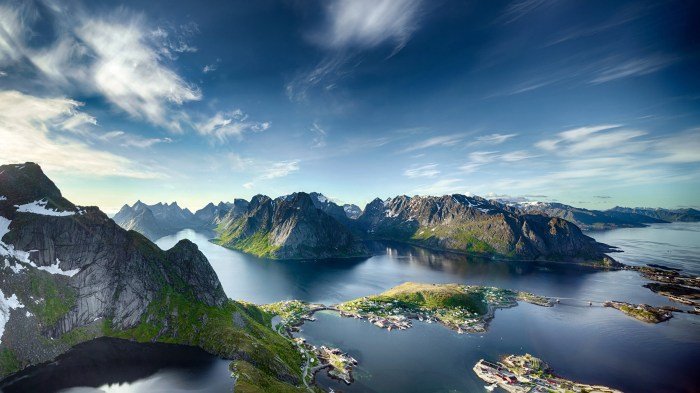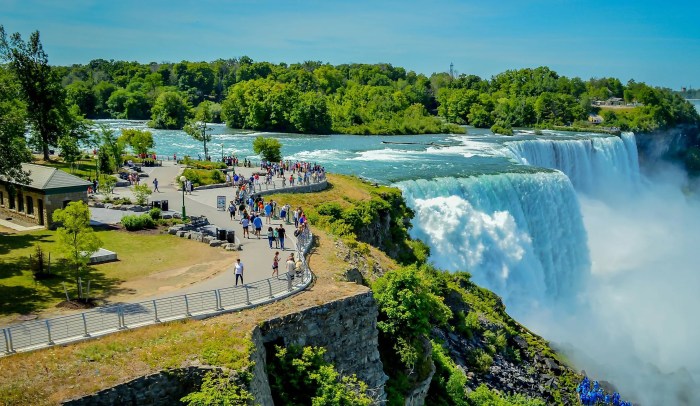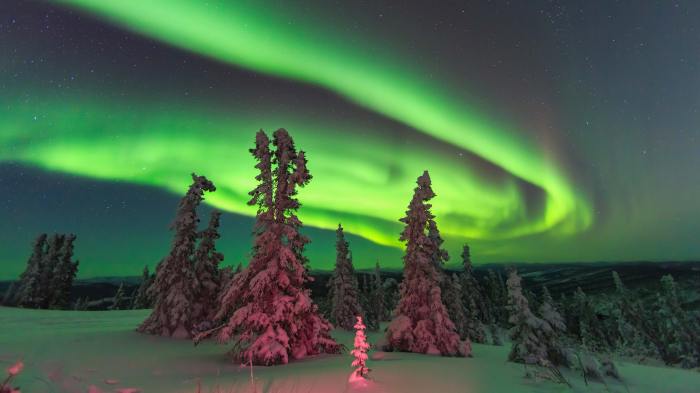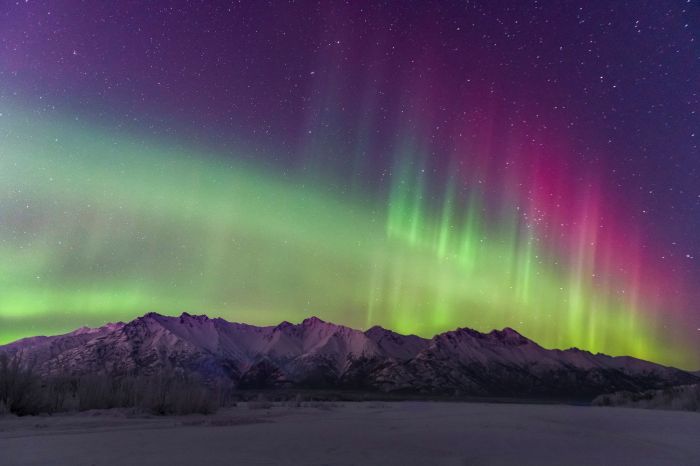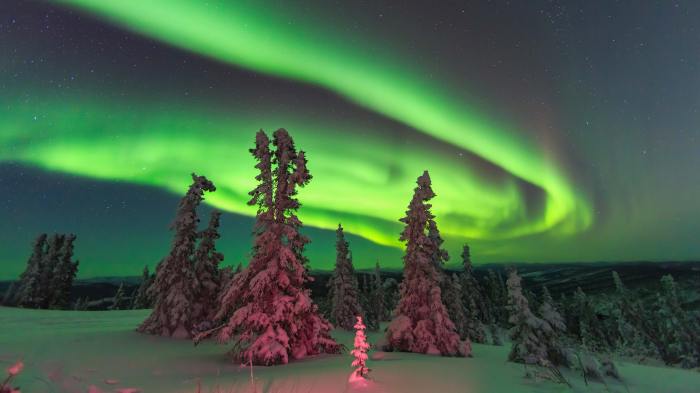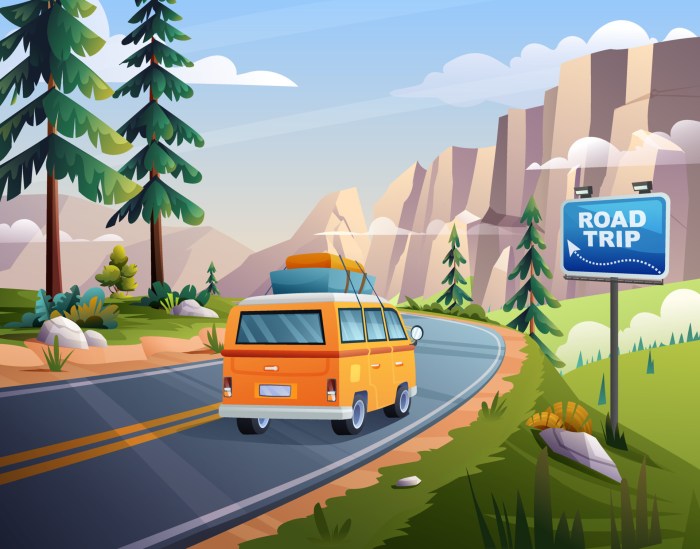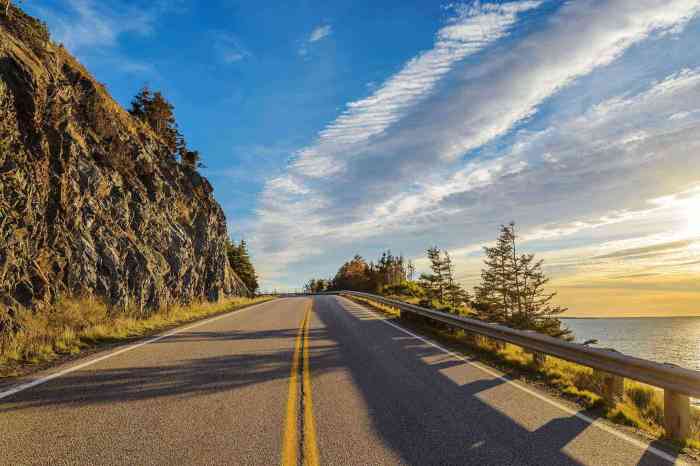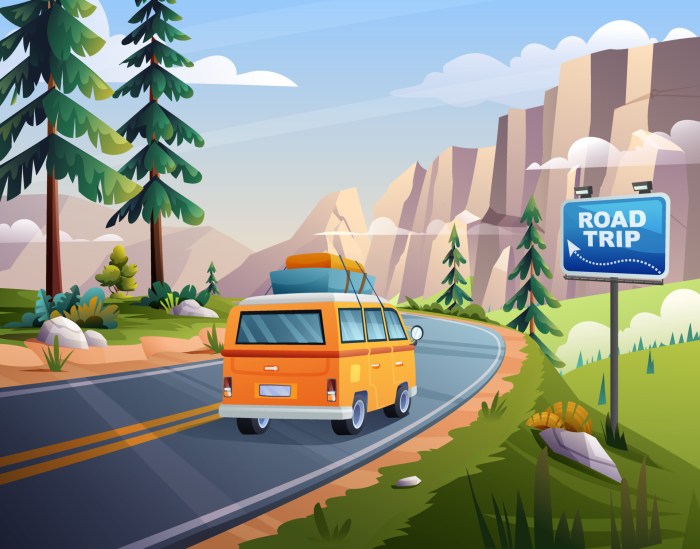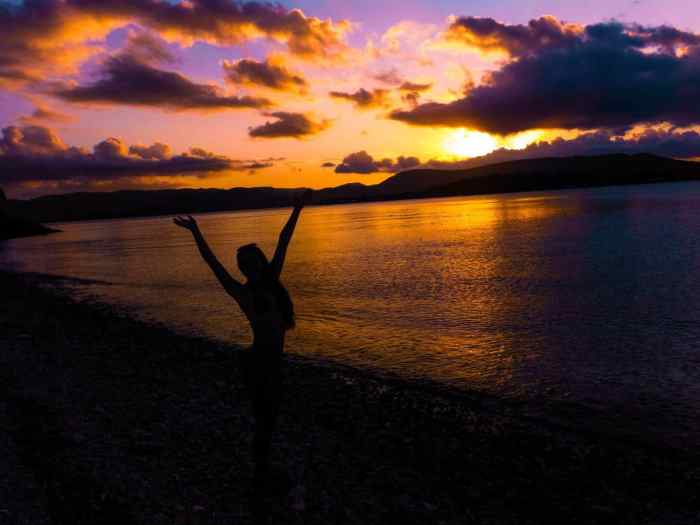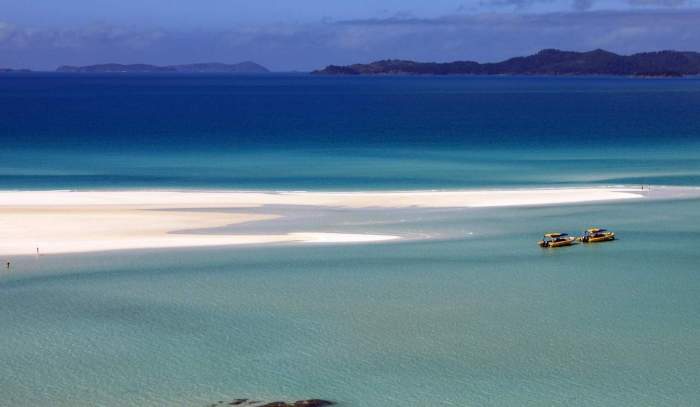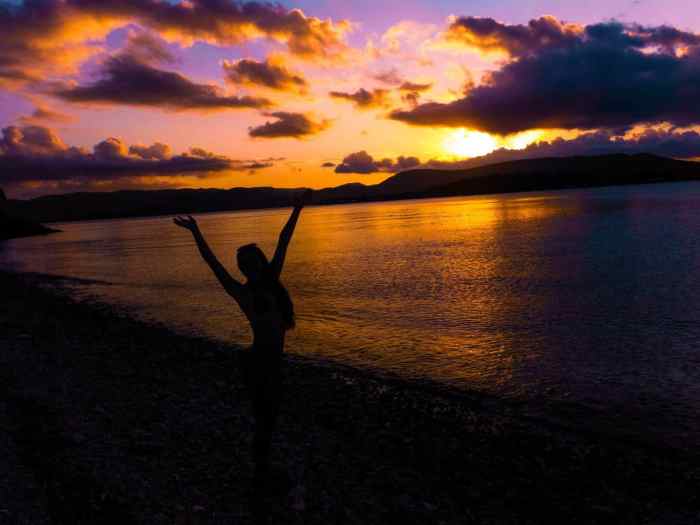Top things to do in Saskatchewan: From breathtaking landscapes to vibrant cultural experiences, Saskatchewan offers a wealth of adventures for every traveler. This comprehensive guide dives into the heart of the province, exploring everything from outdoor adventures and historical sites to unique cities and unforgettable festivals. Discover the best ways to explore this remarkable Canadian gem.
Saskatchewan’s diverse appeal lies in its ability to cater to various interests. Whether you’re an outdoor enthusiast, a history buff, or a foodie, you’ll find something captivating within its borders. This guide provides a detailed overview of the best destinations, activities, and experiences, ensuring a memorable trip for all visitors.
Introduction to Saskatchewan

Saskatchewan, a province nestled in the heart of Canada, boasts a unique blend of stunning landscapes, rich history, and vibrant culture. Known for its vast prairies, rolling hills, and diverse wildlife, Saskatchewan offers a wide array of experiences for visitors, from thrilling outdoor adventures to immersive cultural immersions. Its welcoming spirit and friendly people create a truly unforgettable journey.The province’s history is deeply intertwined with the stories of Indigenous peoples, who have inhabited the land for millennia.
Early European settlement brought new perspectives and challenges, leading to the province’s eventual development as a significant agricultural and resource-rich region. This unique historical tapestry continues to shape Saskatchewan’s identity today.
Saskatchewan’s Landscapes and Natural Beauty
Saskatchewan’s landscapes vary dramatically, from the vast, undulating prairies to the towering Cypress Hills. The province’s natural beauty is evident in its numerous national parks and protected areas, each with its own unique character. For example, Grasslands National Park offers a glimpse into the diverse ecosystem of the prairie, featuring abundant wildlife and scenic vistas. Other noteworthy protected areas include the stunning Prince Albert National Park, offering a wide array of outdoor activities, and the stunning boreal forests surrounding the province’s northern reaches.
The province’s dramatic landscape provides a perfect backdrop for outdoor enthusiasts and nature lovers alike.
Historical Significance of Saskatchewan
Saskatchewan’s history is a compelling narrative of Indigenous presence, European settlement, and economic development. The province’s role in the development of Canada’s agricultural sector is undeniable, with its vast fertile lands contributing significantly to the country’s food supply. Key historical events, such as the establishment of the province itself in 1905, shaped its identity and continue to resonate in its communities today.
The legacy of the early settlers and the Indigenous people who predate them remain an important part of the province’s narrative. The establishment of the province as an independent entity marked a pivotal moment in Canadian history, highlighting the growth and evolution of the nation.
Types of Tourism in Saskatchewan
Saskatchewan caters to a diverse range of interests through its tourism offerings. Outdoor enthusiasts can explore numerous opportunities for hiking, camping, fishing, and wildlife viewing. The province’s vast wilderness areas provide ample space for these activities. Cultural experiences abound, allowing visitors to connect with the province’s rich Indigenous heritage through museums, cultural centres, and First Nations communities.
Historical sites, including heritage farms and pioneer settlements, offer glimpses into the past and provide a deeper understanding of Saskatchewan’s evolution.
Outdoor Adventures in Saskatchewan
Saskatchewan’s vast landscapes offer a playground for outdoor enthusiasts of all levels. From towering mountains to expansive prairies, the province provides unparalleled opportunities for hiking, camping, fishing, and wildlife viewing. This diverse terrain, coupled with its relatively pristine state, makes it a haven for those seeking adventure and a connection with nature. Whether you’re a seasoned hiker or a first-time camper, Saskatchewan has something to excite you.Saskatchewan’s outdoor spaces provide a unique blend of tranquility and excitement.
The vastness of the prairies, the rugged beauty of the mountains, and the serenity of the lakes all combine to offer an unforgettable experience. The province’s commitment to conservation ensures that these natural wonders are protected for future generations, allowing visitors to immerse themselves in the raw beauty of the Canadian wilderness.
Hiking Adventures
Saskatchewan boasts numerous hiking trails, catering to varying skill levels. The Cypress Hills Interprovincial Park, situated on the border with Alberta, features a network of well-maintained trails, offering scenic views of the rolling hills and diverse plant life. For a more challenging experience, the Porcupine Hills provide steep ascents and rewarding panoramic vistas. Essential gear includes sturdy hiking boots, layers of clothing suitable for changing weather conditions, a backpack for carrying supplies, and a map and compass (or GPS device) for navigation.
Spring and fall offer pleasant temperatures, while summer can be hot and dry, requiring careful hydration strategies.
Camping Experiences
Saskatchewan’s numerous provincial parks offer campsites for every taste. From rustic backcountry sites to developed campgrounds with amenities, there’s a spot for every camper. For example, the Qu’Appelle Valley Provincial Park provides a tranquil setting for camping near the river, perfect for fishing or simply relaxing by the water. For those seeking a more remote experience, the vast prairies provide ample opportunities for dispersed camping.
Essential gear includes a tent, sleeping bag, cooking equipment, and appropriate clothing. Be mindful of fire regulations and leave no trace principles. Summer offers ideal camping weather, while fall offers beautiful foliage views.
Fishing Opportunities
Saskatchewan’s lakes and rivers offer abundant fishing opportunities. Lake Diefenbaker, a reservoir on the South Saskatchewan River, is a popular destination for anglers, providing access to a wide range of fish species. For a more challenging and rewarding experience, the Saskatchewan River offers diverse fishing opportunities, particularly in the spring and fall when fish are more active. Essential gear includes fishing licenses, rods, reels, bait, and appropriate clothing for the weather.
Research local regulations and fish stocking information before heading out. Summer is generally the peak fishing season.
Wildlife Viewing
Saskatchewan is home to a rich array of wildlife, making it an excellent destination for wildlife viewing. The Cypress Hills Interprovincial Park is a haven for diverse wildlife species, from bison to pronghorn antelope. The province’s vast grasslands offer opportunities to observe migrating birds and other wildlife. For a more focused experience, guided tours are available in certain areas.
Binoculars, a spotting scope, and knowledge about the local wildlife are helpful additions to your experience. Spring and fall are often ideal for birdwatching, while summer offers a chance to spot mammals in their natural habitat.
Seasonal Considerations
The best time to experience Saskatchewan’s outdoor adventures depends on the activity. Spring offers pleasant temperatures for hiking and fishing, while summer provides ideal conditions for camping and wildlife viewing. Fall offers spectacular foliage displays, while winter provides opportunities for snowshoeing, cross-country skiing, and ice fishing. Always check weather forecasts and be prepared for varying conditions.
Outdoor Adventure Destinations Comparison
| Destination | Activities | Season | Accessibility |
|---|---|---|---|
| Cypress Hills Interprovincial Park | Hiking, camping, wildlife viewing, fishing | Spring, summer, fall | Good road access, well-maintained trails |
| Qu’Appelle Valley Provincial Park | Camping, fishing, hiking | Summer, fall | Good road access, developed campsites |
| Lake Diefenbaker | Fishing, boating | Spring, summer | Good road access, boat ramps |
| Porcupine Hills | Hiking, backpacking | Spring, fall | Moderate access, some rough terrain |
Cultural Experiences and Heritage Sites

Saskatchewan boasts a rich tapestry of cultural experiences, woven from the threads of Indigenous history and traditions, European settlement, and diverse immigrant communities. Exploring these facets offers a profound understanding of the province’s identity and evolution. From the ancient stories etched in the land to the vibrant celebrations that grace the calendar, Saskatchewan’s cultural heritage invites visitors to step back in time and connect with the present.Saskatchewan’s cultural heritage is a multifaceted reflection of its people and history.
Saskatchewan offers stunning landscapes and outdoor adventures, from exploring the prairies to hiking in the mountains. While planning my next trip there, I stumbled upon some incredible information about the best coffee tours in Costa Rica, best coffee tours in costa rica , which sounded amazing! Definitely something to consider when I return to Saskatchewan for future explorations.
It’s a journey through time, showcasing the resilience, creativity, and enduring spirit of its inhabitants. Museums, historical sites, and festivals provide tangible connections to the past, while interactive experiences and performances allow for deeper engagement with the present.
Indigenous History and Traditions, Top things to do in saskatchewan
The Indigenous peoples of Saskatchewan have a deep and profound connection to the land, a history stretching back millennia. Their rich traditions, spiritual beliefs, and artistic expressions are integral to understanding the province’s cultural heritage. Learning about their unique perspectives and contributions is crucial for a complete understanding of Saskatchewan.
- Many Indigenous communities offer opportunities to learn about their cultures through guided tours, workshops, and cultural performances. These experiences often involve traditional ceremonies, storytelling, and demonstrations of traditional arts and crafts.
- Visiting museums dedicated to Indigenous history and culture provides a valuable insight into the diverse stories of the First Nations, Métis, and Inuit peoples of the region.
- Several communities host powwows and other cultural celebrations throughout the year, offering visitors a chance to experience the vibrant music, dance, and traditions firsthand.
Museums and Historical Sites
Museums and historical sites in Saskatchewan offer a wealth of information about the province’s past. These institutions serve as vital repositories of history, artifacts, and stories that illustrate the development and evolution of Saskatchewan.
- The Saskatchewan Archives Board holds a vast collection of documents, photographs, and artifacts that offer a comprehensive view of the province’s history. Visitors can explore collections detailing the experiences of pioneers, the growth of industries, and the challenges faced by the communities that shaped Saskatchewan.
- Museums like the Western Development Museum, the Saskatchewan Western Development Museum, and the Canadian Museum for Human Rights showcase the province’s history and the stories of its people. These institutions offer unique perspectives on the development of the province, including its relationship with Indigenous peoples, and the experiences of various immigrant groups.
- Historic sites, such as Fort Battleford, provide tangible connections to the past. These sites often offer guided tours and interactive exhibits, allowing visitors to walk in the footsteps of those who came before them and gain a sense of the environment and challenges faced by early settlers.
Cultural Festivals and Events
Saskatchewan’s vibrant cultural calendar is punctuated by a variety of festivals and events that celebrate the province’s diverse communities. These celebrations offer unique opportunities to engage with the province’s rich cultural heritage.
- The numerous cultural festivals in Saskatchewan showcase a wide array of traditions and artistic expressions. These festivals often include performances, food vendors, craft demonstrations, and opportunities to interact with local artists.
- Events like the Prince Albert Winter Festival and the Saskatchewan Summer Games offer an opportunity to experience the dynamism and creativity of Saskatchewan’s diverse communities.
- Festivals often highlight local arts, music, dance, and culinary traditions, giving visitors a chance to connect with the vibrant cultural landscape of the province.
Comparison of Cultural Experiences
Different cultural experiences in Saskatchewan offer unique perspectives on the province’s history and identity. The choice of experience depends on the specific interests and goals of the visitor. Indigenous cultural events often provide immersive and personal interactions, while museum visits offer structured and informative experiences.
Key Cultural Attractions
| Attraction | Type | Location | Significance |
|---|---|---|---|
| Fort Battleford | Historical Site | Battleford | Early settlement, interactions between Indigenous peoples and European settlers. |
| Western Development Museum | Museum | Moose Jaw | Comprehensive look at the province’s history and development. |
| Saskatchewan Archives Board | Archives | Regina | Extensive collection of historical documents and artifacts. |
| Various Indigenous Communities | Cultural Experiences | Throughout Saskatchewan | Direct engagement with Indigenous traditions, stories, and ceremonies. |
Cities and Towns to Explore
Saskatchewan boasts a diverse tapestry of cities and towns, each with its own unique charm and historical significance. From bustling urban centers to quaint rural communities, these locations offer visitors a glimpse into the province’s rich past and vibrant present. Exploring these destinations allows for a deeper understanding of Saskatchewan’s character and culture.
Saskatchewan offers a fantastic range of activities, from exploring its stunning national parks to experiencing the vibrant culture of its cities. For seamless travel, checking out the latest information on airlines, airports, and airport procedures is key, especially if you’re planning to travel in and out of the province. Knowing the current status of airlines airports clear airport can save you a lot of hassle.
Ultimately, Saskatchewan has something for everyone, so start planning your Saskatchewan adventure today!
Major City Highlights
Saskatoon and Regina, the two major cities in Saskatchewan, are vibrant hubs of activity. They are home to a multitude of attractions, from museums and galleries to shopping districts and entertainment venues. These cities are significant for their role in the province’s economic and cultural life, serving as important centers for commerce, education, and arts.
- Saskatoon: Known for its friendly atmosphere and progressive spirit, Saskatoon offers a mix of modern amenities and historic landmarks. The city is a key agricultural and educational hub, showcasing its connection to the land. Local favorites include the Saskatoon Farmers’ Market, a vibrant celebration of local produce and crafts, and the Western Development Museum, which traces the province’s evolution from its earliest days.
Consider exploring the many parks and green spaces, such as the scenic river valley, and enjoying a meal at one of the numerous restaurants.
- Regina: The provincial capital, Regina, is a city rich in history and government. The legislative buildings, reflecting its status as the seat of provincial power, are a testament to its significance. The city’s role in the development of Saskatchewan is undeniable. The Art Gallery of Saskatchewan and the Pasqua Reserve are notable attractions. Indulge in the vibrant culinary scene and explore the diverse retail options.
Smaller Towns and Communities
Beyond the major cities, Saskatchewan’s smaller towns offer a unique opportunity to experience the province’s rural character. These communities are often centers of agricultural activity and are rich in local history and traditions. Visiting these areas offers a chance to interact with locals and appreciate the unique cultural heritage of Saskatchewan.
- Moose Jaw: A vital hub in the province’s history, Moose Jaw has been a significant center for agriculture and industry. Explore the local museums, and delve into the town’s role in the province’s development. A significant portion of the city’s infrastructure is rooted in its historical significance. The local community’s dedication to preserving and showcasing its heritage is evident in various community initiatives.
- Swift Current: Swift Current, a community deeply connected to the agricultural landscape, is a great place to learn about the province’s history and culture. The city’s development was inextricably linked to the development of the agricultural sector. Enjoy local produce, explore local shops, and experience the town’s welcoming atmosphere.
Transportation Options
Reaching these destinations is straightforward, with various transportation options available. Saskatchewan has a well-maintained network of highways and roads that provide access to various communities. The province’s extensive highway system makes road travel a convenient option for visiting different areas. Air travel is also available to major cities. Consider the convenience and cost-effectiveness of various options when planning your itinerary.
City/Town Summary
| City/Town | Population | Attractions | Activities |
|---|---|---|---|
| Saskatoon | 270,000 (approx.) | Western Development Museum, Saskatoon Farmers’ Market, Parks | Shopping, dining, museums, outdoor recreation |
| Regina | 210,000 (approx.) | Legislative Buildings, Art Gallery of Saskatchewan, Pasqua Reserve | Visiting historical sites, exploring art galleries, experiencing the city’s culture |
| Moose Jaw | 25,000 (approx.) | Local Museums | Historical exploration, local experiences |
| Swift Current | 15,000 (approx.) | Agricultural landmarks | Exploring the agricultural sector, local produce, rural experiences |
Events and Festivals
Saskatchewan’s vibrant cultural scene comes alive through a diverse range of events and festivals. From bustling agricultural fairs to captivating music performances, these celebrations showcase the province’s rich heritage and artistic talents. These events draw people from across the province and beyond, creating a lively atmosphere and fostering a sense of community. Exploring these festivals offers a unique opportunity to delve deeper into the spirit of Saskatchewan.The province hosts a wide variety of events throughout the year, reflecting the diverse interests and backgrounds of its residents.
These festivals are more than just entertainment; they are an integral part of Saskatchewan’s identity, offering a platform for local artisans, musicians, and agricultural producers to showcase their skills and passion. Many events feature local food vendors, artisans’ stalls, and family-friendly activities, making them a great way to experience the province’s charm.
Major Events and Festivals
Saskatchewan boasts a calendar brimming with exciting events, from renowned music festivals to captivating art displays and historical reenactments. These celebrations provide opportunities to connect with the community, immerse yourself in the local culture, and celebrate the spirit of the province. The festivals offer a glimpse into the province’s heritage, showcasing its agricultural roots, artistic endeavors, and musical traditions.
Agricultural Fairs
These fairs, often held in smaller communities across Saskatchewan, are deeply rooted in the province’s agricultural heritage. They showcase the hard work and dedication of local farmers, ranchers, and agricultural enthusiasts. Attendees can witness livestock competitions, agricultural displays, and enjoy the vibrant atmosphere of these traditional events. Many fairs feature delicious food, live music, and family-friendly activities.
Music Festivals
Saskatchewan hosts a number of music festivals, featuring a variety of genres and artists. From small local gatherings to large-scale events, these festivals provide opportunities to experience live music, explore different genres, and immerse yourself in the vibrant sounds of the province. Some festivals focus on specific musical styles, while others feature a mix of genres, catering to a wider audience.
Art Shows and Exhibitions
Several art shows and exhibitions are held throughout the year in various locations across Saskatchewan. These events highlight the artistic talents of local and regional artists. Art shows often feature a diverse range of mediums, including painting, sculpture, photography, and more. Many exhibitions are accompanied by workshops and artist talks, offering unique insights into the creative process.
Festival Schedule
| Month | Event Name | Date | Location |
|---|---|---|---|
| June | Saskatoon Music Festival | Various dates in June | Saskatoon |
| July | Moose Jaw Stampede | Usually held in July | Moose Jaw |
| August | Prince Albert Exhibition | Usually held in August | Prince Albert |
| September | Regina Folk Festival | Usually held in September | Regina |
| October | Saskatoon Fall Fair | Usually held in October | Saskatoon |
Accommodation Options: Top Things To Do In Saskatchewan
Saskatchewan offers a diverse range of accommodation options to suit every traveler’s needs and budget, from cozy cabins nestled in the wilderness to modern hotels in bustling cities. Whether you’re seeking a luxurious stay or a budget-friendly option, you’ll find something perfect for your Saskatchewan adventure. This section details the various accommodation types available, their amenities, and essential booking information.Saskatchewan’s accommodations reflect the province’s diverse landscapes and activities.
From the grandeur of the prairies to the beauty of the boreal forests, the lodging options available are as varied as the experiences you can have. Understanding the different types of accommodation will help you choose the best fit for your trip.
Hotel Accommodations
Hotels in Saskatchewan provide a comfortable and convenient stay, especially in major cities and tourist areas. They typically offer a wide array of amenities, including restaurants, fitness centers, swimming pools, and business centers. The level of service and amenities often corresponds to the price range. For example, a luxurious hotel in Regina will likely have a higher price point than a budget-friendly hotel in a smaller town.
Many hotels offer online booking platforms and readily available customer service channels for inquiries and reservations.
Cabin Stays
Cabin accommodations are popular for their secluded and often rustic charm. These accommodations are ideal for those seeking a more immersive experience with nature. Many cabins are located in scenic areas, providing stunning views and opportunities for outdoor activities. Amenities can vary significantly, ranging from basic kitchens and bathrooms to more luxurious options with private hot tubs or fireplaces.
Prices for cabins typically vary depending on the location, size, and amenities included. Booking cabins in advance, especially during peak season, is recommended.
Campgrounds
Campgrounds are an affordable and engaging option for travelers who appreciate the outdoors. They offer a variety of campsites, from basic tent sites to more spacious RV hookups. Campgrounds often have amenities like restrooms, showers, and laundry facilities. They are generally located in parks and recreational areas, providing access to hiking trails, fishing spots, and other outdoor activities.
Prices for campsites are usually lower than hotels or cabins, making them a great choice for budget-conscious travelers.
Table: Accommodation Options
| Type | Location | Price Range | Amenities |
|---|---|---|---|
| Hotel | Regina, Saskatoon, Moose Jaw | $100-$500+ per night | Restaurant, Fitness center, Pool, Business center |
| Cabin | Cypress Hills, Prince Albert National Park | $100-$300+ per night | Kitchen, Bathroom, Fireplace, Hot tub (varies) |
| Campground | Various provincial parks | $30-$70 per night | Restrooms, Showers, Laundry facilities, Picnic tables |
Booking Procedures and Information
Booking accommodations in advance, particularly during peak season, is strongly recommended. Check websites, contact directly, or use travel booking platforms for reservations. When booking, gather necessary information such as dates of stay, number of guests, and any specific requirements or preferences. Confirm booking details, including the contact information for the accommodation provider.
Food and Drink Experiences
Saskatchewan’s culinary scene is a vibrant tapestry woven from diverse influences and fresh, local ingredients. From hearty, traditional dishes to innovative interpretations of regional flavours, there’s a meal waiting to delight every palate. The province boasts a burgeoning restaurant scene, showcasing the best of Saskatchewan’s bounty, along with a strong appreciation for the agricultural heritage that fuels it.The province’s agricultural heartland provides an abundance of fresh produce, meats, and dairy products, forming the bedrock of Saskatchewan’s cuisine.
This emphasis on local ingredients creates unique flavour profiles and supports a growing local food economy. Beyond the farms, you’ll find a collection of restaurants, food markets, and other culinary attractions, each offering a glimpse into the region’s food culture.
Local Specialties and Unique Dishes
Saskatchewan’s culinary heritage is deeply rooted in its agricultural traditions. Local specialties often feature hearty ingredients like bison, beef, and pork, frequently complemented by fresh vegetables and fruits. A common thread is the use of local grains, like wheat and barley, in breads, pastries, and even some savoury dishes. A popular trend in the culinary scene is highlighting the province’s diverse agricultural bounty.
Saskatchewan offers breathtaking landscapes and outdoor adventures, but if you’re looking for a vibrant cultural experience, consider checking out the amazing Chinese Lantern Festival in North Carolina. This festival is a dazzling display of artistry and light, a great contrast to the natural beauty of Saskatchewan. Whether you’re exploring the prairies or searching for a unique cultural celebration, there are plenty of wonderful things to see and do in the province.
This includes everything from locally sourced produce to unique meat cuts.
Popular Restaurants
Saskatchewan offers a variety of dining experiences, from casual eateries to fine-dining establishments. Here’s a glimpse into some popular options across the province.
| Restaurant | Cuisine | Location | Atmosphere |
|---|---|---|---|
| The Prairie Pig | Modern Canadian | Saskatoon | Upscale, intimate |
| The Grain Bin | Farm-to-table | Moose Jaw | Casual, welcoming |
| The Bison Bar & Grill | Steakhouse | Regina | Rustic, family-friendly |
| The Wheat City Market | Various | Saskatoon | Vibrant, bustling |
| The Rural Route Cafe | Comfort food | Swift Current | Cozy, homey |
Food Markets and Other Attractions
Farmers’ markets are a cornerstone of Saskatchewan’s food culture, providing a direct connection between farmers and consumers. These markets are more than just places to buy produce; they’re vibrant hubs where you can discover local products, sample artisan cheeses, and engage with the farmers behind the food. The Wheat City Market in Saskatoon is a prime example, showcasing a wide range of local products and offering a truly authentic taste of Saskatchewan.
Tips for Planning a Trip
Planning a trip to Saskatchewan requires careful consideration of various factors. From navigating the diverse landscapes to understanding local customs, thorough preparation ensures a smooth and enjoyable experience. This section provides essential information to help you plan your Saskatchewan adventure.Understanding the specifics of travel requirements and local customs will contribute to a memorable and safe trip. This includes details on visas, currency, transportation, necessary documents, and the optimal time to visit, factoring in weather patterns and seasonal events.
Visa Requirements
Saskatchewan, as part of Canada, requires visitors to adhere to Canadian immigration policies. Citizens of certain countries may require a visa prior to travel. It is crucial to verify visa requirements based on your nationality well in advance of your trip. Official Canadian government websites provide comprehensive information on visa application procedures and eligibility criteria.
Currency Exchange
The Canadian dollar (CAD) is the official currency of Saskatchewan. While some smaller businesses might accept US dollars, exchanging currency to CAD is recommended for ease of transactions and potential cost savings. Banks and exchange bureaus offer currency exchange services, and online comparison tools can help you find the most competitive rates.
Travel Advisories
Staying informed about travel advisories is vital for a safe trip. The Canadian government’s travel advisory website provides current information on any potential safety concerns or travel restrictions in Saskatchewan and surrounding areas. Review this information before and during your trip for updated guidance.
Transportation
Saskatchewan offers various transportation options. Driving is a popular choice for exploring the vast landscapes. Local buses and intercity transport are available for more convenient travel within cities and between towns. Consider booking accommodations in areas with good public transport access or renting a vehicle for greater flexibility in exploring rural regions. Planning your transportation in advance will help you allocate time and budget efficiently.
Necessary Documents for Entry and Exit
Valid passports, along with any necessary visas, are crucial for entry into Saskatchewan. Ensure your passport’s validity extends beyond your planned stay. Keep copies of your passport and other important documents separate from the originals. For exit, having your passport and any necessary departure documents is essential. These documents are vital for a smooth travel experience and adherence to Canadian immigration laws.
Best Time to Visit
Saskatchewan’s climate varies considerably across the province. Spring and fall offer pleasant temperatures and fewer crowds, ideal for outdoor activities. Summer brings warm weather and longer daylight hours, perfect for enjoying outdoor adventures and festivals. Winter brings stunning landscapes, ideal for skiing, snowboarding, and ice fishing, but requires appropriate winter clothing and gear. Research specific events and festivals happening during your potential travel dates to tailor your trip accordingly.
Important Travel Tips and Advice
- Purchase travel insurance to cover unforeseen circumstances like medical emergencies or trip cancellations.
- Research local customs and etiquette to ensure a respectful interaction with the community.
- Learn basic phrases in the local language, such as greetings and thank yous.
- Pack appropriate clothing for the expected weather conditions, considering potential temperature variations.
- Bring necessary medications and any personal care items.
- Be mindful of local laws and regulations, particularly regarding wildlife and park guidelines.
- Download useful apps for navigation, translation, and local information.
- Inform someone of your travel plans, including your itinerary and contact information.
- Carry copies of important documents, such as your passport, in a separate location from the originals.
Final Summary
In conclusion, a trip to Saskatchewan promises an unforgettable journey. From the thrill of outdoor adventures to the richness of cultural experiences, the province offers something for everyone. This guide has provided a snapshot of the many wonders Saskatchewan has to offer, encouraging you to plan your own adventure. Prepare to be amazed!








